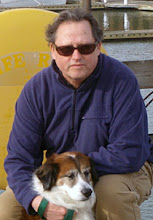MAKING SUSTAINABILITY BEAUTIFUL, Chandler Burr, Perfume Critic, NYTimes
Probably the best opening presentation to a technical seminar I attended. Mr. Burr managed to touch on each known attribute reflecting a serious study. He was effective enough that nearly all of the remaining presenters made a reference to him in support or disagreement on various issues. His personal flair or stylistic emotions for the industry did not falsely color his salient arguments. Was he technically light in places? Of course but he mentioned how he sourced the info. Mr. Burr offered: one, not supporting ingredient transparency is moronic. Two, prevention is best served by reducing dosage. Three, there are very good examples of corporate stewardship to communicate. Four, methods exist for testing biodegradation.
Mr. Burr did start out by questioning the audience on specific raw materials and introduced various cultural, economic, energy consumption and agricultural realities that effect sustainability definitions and parameters. For such a knowledgeable audience, there were quizzical glances on the material facts. He also cited the efforts of www.goodguides.com to rate products by scent and in an eco fashion.
Mr. Burr seemed to speak from the heart and set a humanist bar. More info on Mr. Burr and his publications are on his website.
SUSTAINABILITY AS A DRIVER FOR INNOVATION, Lauren Heine, Senior Science Advisor, Clean Production Action
Dr. Heine's presentation is a must read when published. I am certain portions are already on Clean Production's website. Lauren uses many graphics uncomplicating the benefits and role of Green Chemistry while combining sound science with chemical policy. She highlighted the elements of Trust, what chemicals need examination; Emerging Science like endocrine disruption; Limitation of Data and market Response from NGO's or product benefit organizations like GoodGuide.
Her presentation described the wants of NGO's as innovation drivers using the basic tenants of green chemistry, reduce risk by reducing hazards. [risk=hazard x exposure] Future alternations should be guided by "cradle to cradle" attributes and seeing fragrance ingredients used in products that are rinsed down the drain as biological nutrients.
Her solutions beside setting informed policy is practice informed substitution while aiming for the top.
DEFINING "NATURAL" FOR THE PERSONAL CARE/ HOUSEHOLD PRODUCT INDUSTRIES, Jack Corley, Executive VP, Trilogy Fragrances, Inc.
This presentation is a must read when posted primarily due to the extensive product data. Jack opened by discussing the potential for hazards with naturals and how organized are the market reactions. The "essential oil" suppliers came to understand how overstating product perception as "safer" could be claimed as green washing (The Seven Sins) and that potential effect on the remarkable growth for casted by Mintel in personal care products. (600 m /2013)
Mr. Corley has been intimately involved in setting Natural Products Association Standards expected to be released later this year. To appreciate and understand evidence based information on essential oils, Mr. Corley referenced Sloan Kettering's website.
It will be interesting to the Green Nose how DfE's data matches the Natural Products data since both are yet to be released.
MARKETING AND BRANDING WITH FRAGRANCE, Harold Vogt, Founder & Chief Marketer, Scent Marketing Institute
I found this presentation on large space airfreshening for work and residential places interesting because Harold was very straightforward about the importance of delivering a cleaned environment with scent. And his future challenge to provide customer protection in a growing product segment that needs to be sensitive to multi-sensitive people.
The Green Nose found Mr. Vogt very current in his scent knowledge, formulation requirements, quality and customer satisfaction processes, and need to actually create a "no scent" effect with fragrance. Mr. Vogt demonstrated his personal responsibility to stay involved in this technical forum.
CARBON FOOTPRINTING A GRREN CLEANING PRODUCT: A STEP TOWARDS SUSTAINABILITY, Margret Whittaker, Managing Director and Chief Toxicologist, TOXSERVICES LLC
Dr. Whittaker's in depth presentation and the importance of understanding carbon footprinting deserves a strong read when the presentation is posted. Her firm is now one of the third party reviewers for DfE and will be working with small and large DfE sponsors. Their studies are extensive and take 200 - 500 hours.
The definition of carbon footprinting is measuring greenhouse gas (GHG) emissions caused by a particular activity or entity. (note: Dr. Whittaker is not a fan of offsets) They look at the company level and the product level. In her opinion, better or worse, consumers want a "low carbon economy." Standards for product analysis is available on the web under PAS 2050. This is the start of the process map. In the end the results must be validated by independent certification.
Margaret suggests to start with your facility first. There are two other less reliable methods, one to complete a "life cycle assessment" and the other is an online carbon footprint calculator.
For the formulator, a packaging study is the easiest way to reduce your footprint. Fragrances are a boundary item, therefore most of her presentation is for the formulator.
ALTERNATIVES TO ANIMAL IN TOXICITY TESTING, Paul Locke, Associate Professor, John Hopkins Bloomberg School of Public Health and Center for Alternatives to Animal Testing
Again another involved presentation that warrants a complete read. Mr. Locke is an attorney (recovering, his line) who spoke toward the implications of reduced/ no animal testing for public health protection. He addressed emerging trends such as the public call for transparency, the many data gaps, and four stages of evidence based toxicity. In the next five years he stated dose response/ extrapolation modeling/ high throughput of molecular mechanism; along with regulatory context shift in focus from special outcomes to perturbation (change in physical outcomes) will be the norm.
The other driver will be REACH, whose implication will be actually understanding and integrating new data.
The alternative, in his opinion, will be to litigate as an attempt to delay.





No comments:
Post a Comment